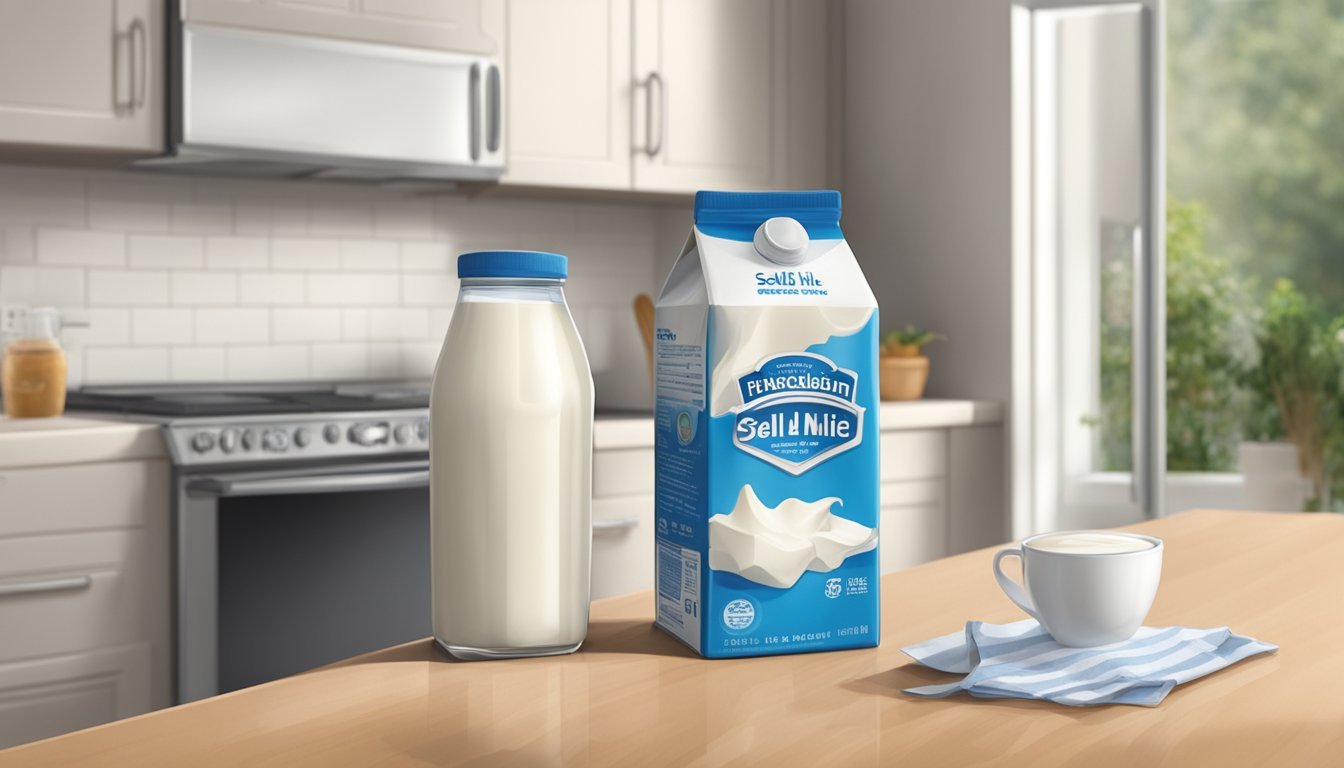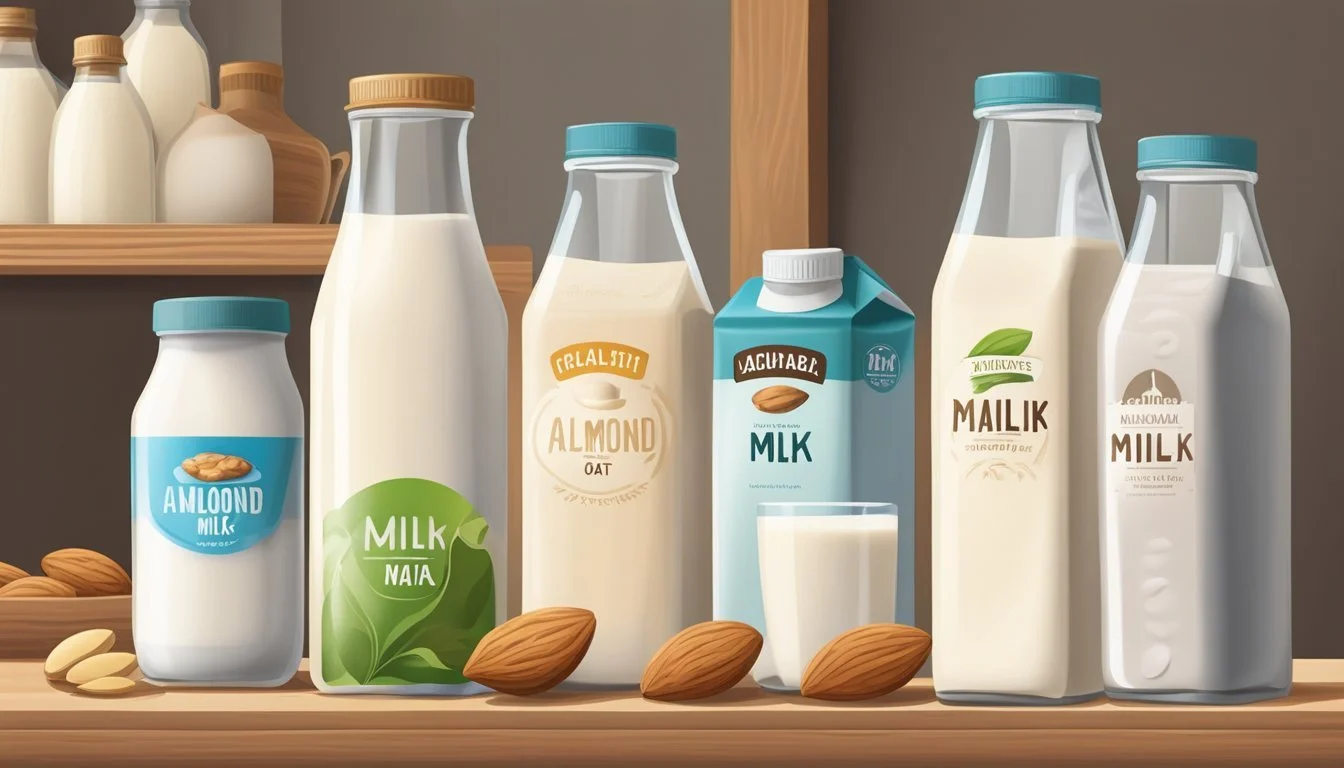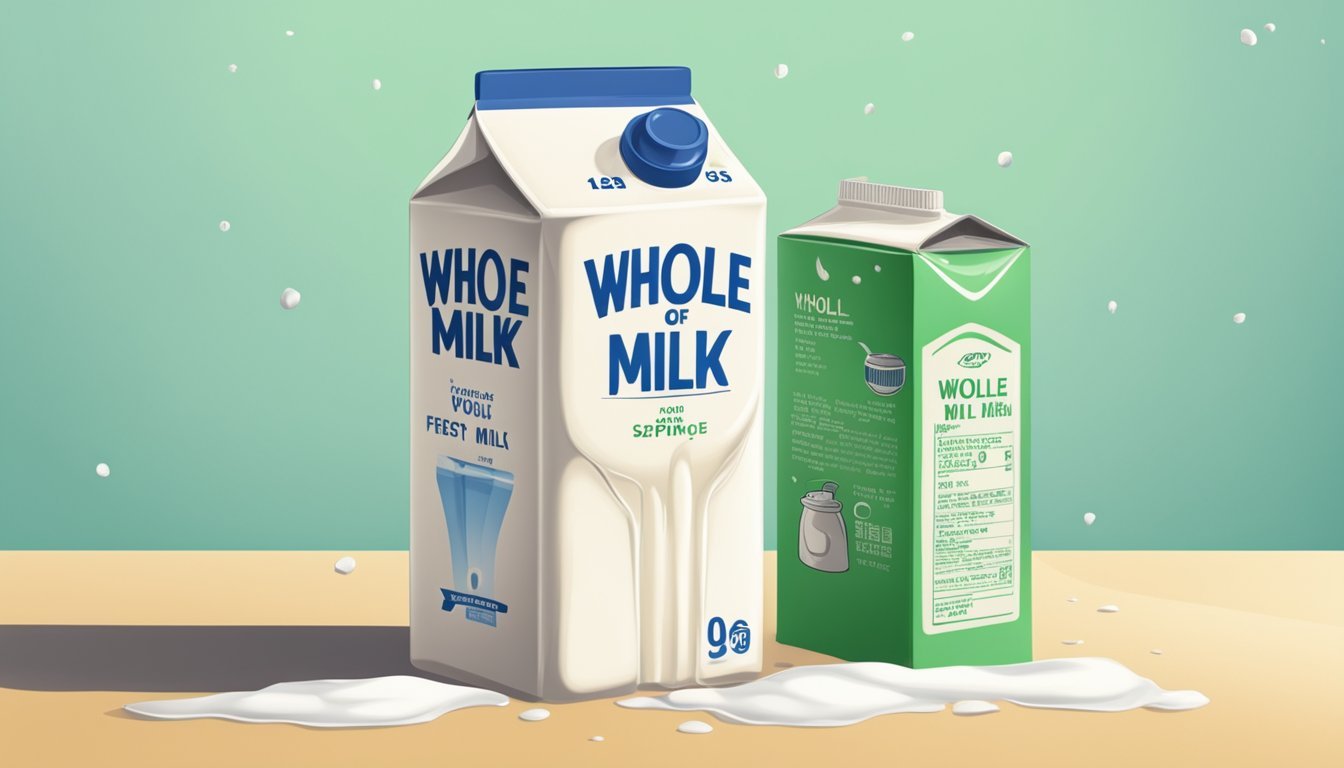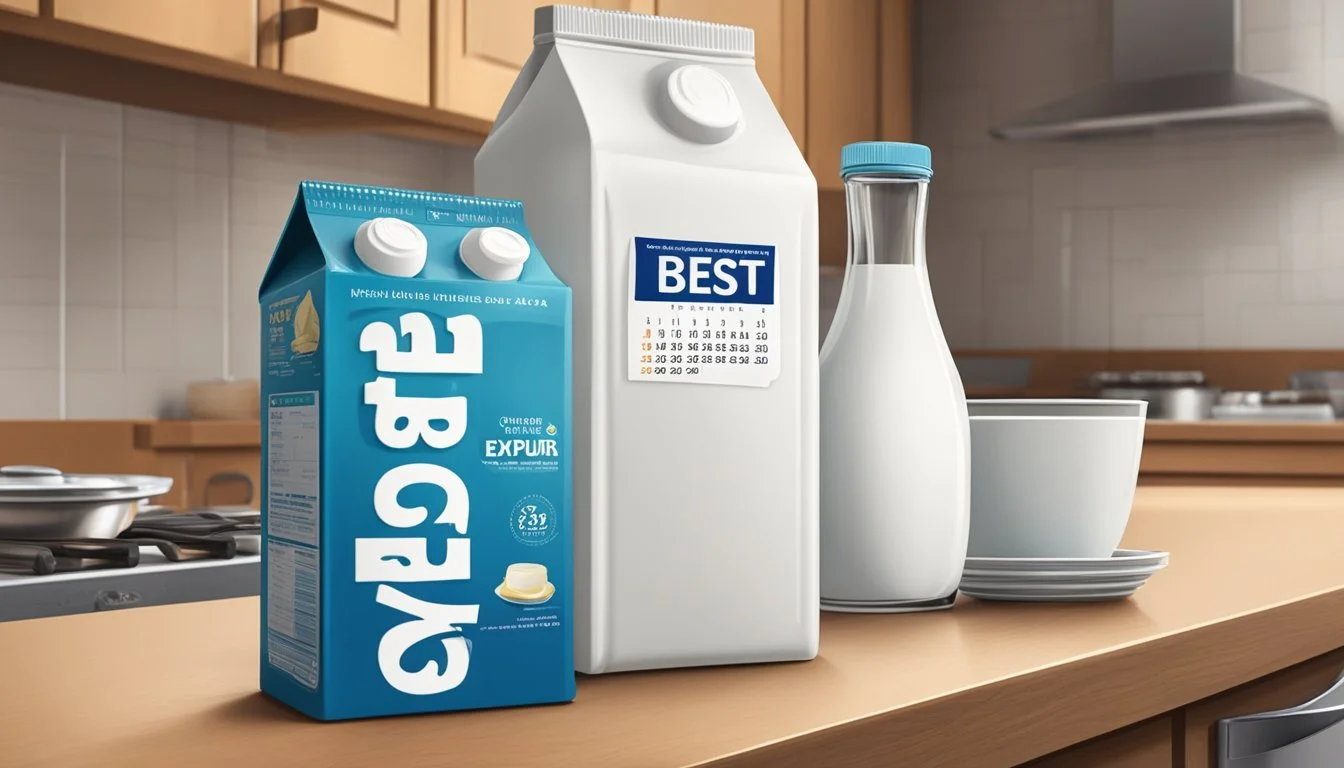How Long Does Whole Milk Last?
Understanding Expiration and Storage Guidelines
Understanding the shelf life of whole milk is essential for health, safety, and preventing food waste. When properly refrigerated, unopened whole milk generally lasts 5-7 days past its printed expiration date. Once opened, it's advisable to consume it within a week. The longevity of milk after its expiration date can be influenced by factors including storage conditions, the type of milk, and whether it's been opened.
Whole milk's higher fat content compared to skim milk may lead to the belief that it has a different shelf life. However, the difference is minimal, and both types of milk typically have a similar expiry timeframe. It's crucial to store milk properly, at or below 40 degrees Fahrenheit in the refrigerator, to extend its usability as much as possible.
Consumers should be aware of telltale signs that milk has gone bad. These include a sour smell, a change in color, and a lumpy texture. If whole milk exhibits any of these characteristics, it should be discarded regardless of the printed expiration date. Safety should always be prioritized over attempting to use milk that may be questionable.
Understanding Milk Expiration
The expiration of milk is determined by factors such as storage conditions and pasteurization methods. This section focuses on how such variables influence milk's shelf life, signs of spoilage, and appropriate storage practices.
Expiration Dates Explained
Expiration dates, such as the sell-by date, use-by date, or best if used by date, are indicators provided by manufacturers to suggest when a product is at its best quality. The FDA does not legally require these dates for food safety, but these guidelines help consumers determine peak freshness.
Food Safety Regulations
The USDA oversees the safety and quality of dairy products, including milk. While the expiration date is not a mandatory regulation for safety, it does provide a guideline that helps minimize the risks of foodborne illnesses caused by bacteria like listeria, salmonella, and E. coli.
Spoilage Process
Milk spoilage occurs due to bacterial growth which produces lactic acid, causing sour taste and curdling. Factors affecting the spoilage rate include temperature, light, and exposure to air. When milk's odor, taste, or texture changes, it indicates spoilage has initiated.
Pasteurization and Shelf Life
Pasteurization destroys harmful microbes in milk, extending its shelf life. There are various methods, such as HTST (high temperature, short time) for pasteurized milk and UHT (ultra-high temperature) for UHT milk, each impacting shelf life differently. Raw milk has a short shelf life due to the absence of pasteurization.
Storage Recommendations
To extend milk's shelf life, it should be refrigerated at 40°F or below immediately upon purchase and after every use. Proper storage in the coldest part of the refrigerator, usually the back, is crucial.
Signs of Spoiled Milk
Evaluate milk for spoilage by checking:
Smell: Sour odor
Taste: Sour or off-flavor
Texture: Curdling or thickness
If any of these signs are present, the milk should be discarded.
Types of Milk
Different types of milk, such as skim milk, whole milk, and cream, have varying shelf lives due to different fat content and protein levels. Generally, higher fat content can lead to a shorter shelf life due to quicker rancidity.
Influence of Fats and Proteins
Fat content and proteins in milk influence both taste and spoilage. Fats can oxidize, leading to rancidity, while proteins provide nutrients for bacteria, which can increase spoilage rates.
Safety Risks of Spoiled Dairy
Consuming spoiled dairy products can lead to foodborne illness. Common bacteria in bad milk include listeria, salmonella, and E. coli, which can cause serious health risks, particularly for vulnerable populations.
Special Considerations for Infants
Infants are highly susceptible to bacteria and viruses due to their developing immune systems. Therefore, special attention must be given to the expiration and storage of dairy products like infant formula to prevent risks of foodborne illnesses.
Maximizing Milk's Usable Life
When handling whole milk, it's crucial to adopt practices that prolong its freshness and minimize spoilage. Correct refrigeration, understanding labeling, and the option to freeze can significantly affect the shelf life.
Correct Refrigeration Practices
Storing whole milk at a consistent temperature in the refrigerator is imperative for maintaining its quality. Whole milk should be kept at 40°F (4°C) or below, ideally on the lower shelves where the temperature is most stable. Do not store milk in the door compartments, as the temperature there fluctuates more with frequent opening and closing, accelerating spoilage.
Freezing Milk
To extend the lifespan of whole milk beyond the refrigerator's constraints, freezing is a viable option. It's important to leave sufficient headspace in the container before freezing since milk expands. Thawed milk should be used within 2-3 days, and it's normal to notice separation in consistency; simply shaking the container can restore its uniformity.
Understanding Sell-By vs. Use-By
Sell-by and use-by dates on milk containers guide consumers on freshness and peak quality. The sell-by date informs retailers when the product should be sold or removed from shelves. On the other hand, the use-by date suggests when milk's quality starts to decline. Whole milk typically remains fresh for about 5-7 days past its sell-by date if stored properly, although this can vary based on initial freshness and handling before purchase.
Practical Tips to Prevent Spoilage
Extending the life of whole milk and ensuring its quality involves mindful practices in handling, storage, and usage. Through careful attention to hygiene, proper container use, avoiding cross-contamination, and sensible consumption, spoilage can be significantly delayed.
Hygienic Handling
Always wash hands thoroughly before touching the milk container to minimize the introduction of bacteria. Use clean utensils when pouring milk to preserve its flavor and quality.
Proper Container Use
Milk should be stored in its original container or a clean, airtight container to protect its texture and taste. This also helps to keep out external contaminants that may lead to spoilage.
Avoiding Cross-Contamination
To prevent foodborne illness, ensure milk does not come into contact with any items that may be contaminated, such as unclean containers or food that carries bacteria. Proper storage plays a crucial role in preventing cross-contamination.
Sensible Consumption
Open milk should be consumed promptly to maintain its freshness and reduce food waste. Refrigerate milk at temperatures between 32°F and 39.2°F and return it to the fridge immediately after use to preserve its quality and safety.
Exploring Milk Alternatives
As consumers seek alternatives to traditional dairy milk, either due to dietary preferences, lactose intolerance, or shelf-stability concerns, the market has responded with a variety of options. These come in both dairy-free forms and shelf-stable variants, each with their unique properties and shelf lives.
Dairy-Free Options
Soy Milk: A popular dairy-free alternative rich in protein, soy milk typically lasts 7-10 days once opened and refrigerated. It is a suitable option for those with lactose intolerance.
Almond Milk: Another well-liked nondairy choice, almond milk offers a nutty flavor and is often fortified with vitamins and minerals. Unopened, it can last about 7-10 days in the fridge after the printed date and should be consumed within 7 days after opening.
Shelf-Stable Milk Variants
UHT Milk: Ultra-high temperature (UHT) processed milk can be stored at room temperature until opened, thanks to the ultra-pasteurization process. Once opened, UHT milk should be consumed within 7-10 days, similar to its refrigerated counterparts.
Milk Type Refrigerated Shelf Life (opened) Room Temperature Shelf Life (unopened) Soy Milk 7-10 days Up to the printed date Almond Milk 5-7 days Up to the printed date UHT Milk 7-10 days Several months
In summary, milk alternatives offer varied shelf lives and are an important consideration for individuals with specific dietary needs or seeking longer-lasting options.
Culinary Uses of Milk Past Peak
When whole milk is just past its peak but not yet spoiled, it can serve as a versatile ingredient in various recipes. One must ensure that the milk has not reached a point where it is unsafe to consume.
Cooking with Spoiled Milk
Spoiled milk, characterized by a sour taste and clumpy texture, should not be confused with milk that is simply past its prime freshness date. It is crucial to never use milk that exhibits signs of spoilage such as a strong unpleasant odor, mold, or a yellowish color. However, if milk has just begun to sour but is not rotten, it can still be utilized in specific culinary applications. The acidic quality of this milk can add desirable flavor in recipes for baked goods like scones, pancakes, and biscuits. This acidity can also play a similar role to buttermilk in tenderizing meats.
Recipes for Near-Expiration Milk
Milk that is nearing expiration but has not soured can be effectively used in a variety of recipes:
Hot Chocolate: Enhance the creamy texture by using near-expiration milk in place of water or fresher milk.
Custards and Puddings: These desserts require cooking and can mask subtle changes in milk's flavor while preventing food waste.
Bechamel Sauce: The base for many creamy sauces (What wine goes well with creamy sauces?) and dishes can be enriched with milk that's almost expired.
Adding a pinch of salt can help balance and restore flavors when cooking with milk that's near its expiration. By incorporating near-expiration milk into these recipes, one can not only reduce food waste but also enjoy delicious concoctions without compromising on safety or taste.
Frequently Asked Questions
This section addresses common queries about the shelf life, storage practices, and safety of different types of milk, with a focus on ensuring quality and preventing illness.
Milk Storage Queries
Proper storage is key to extending the shelf life of milk. Whole milk should be refrigerated as soon as possible and kept at a consistent temperature of 40°F (4°C) or below. Here are specific storage guidelines:
Refrigerate immediately: Always store milk in the refrigerator upon purchase.
Keep refrigerated: Store at the back of the fridge where it's coldest.
Seal tightly: Ensure the milk container is sealed to prevent contamination and odors.
Health and Safety Inquiries
Food safety is paramount when consuming dairy products. Milk that has passed its expiration date may harbor bacteria leading to foodborne illnesses. To assess milk quality:
Smell it: Sour-smelling milk indicates spoilage.
Inspect it: Clumping or discoloration can signify milk that is unsafe to consume.
Taste cautiously: If appearance and smell don't raise flags, a small taste can confirm quality.
Advice for Specific Milk Types
Different types of milk have varying shelf lives:
Whole milk: Typically lasts 5-7 days past the printed date when stored correctly.
Skim milk: May last slightly longer, up to 7 days when refrigerated properly.
Freeze milk for extended storage:
Whole milk can be frozen for up to two months.
Skim milk is also suitable for freezing.
Thaw milk in the refrigerator and consume quickly.
Understanding Milk Labels
Milk cartons come with dates that inform consumers about their expected shelf life:
Sell-by: Primarily for retailers, indicating how long to display the product.
Use-by: Suggested date by which one should consume the milk for optimal quality.
Expiration date: The last recommended day for use, after which quality is not guaranteed.
It's important to note that while milk can sometimes be consumed a few days after these dates, one should always prioritize safety and quality over prolonging the life of the product.







